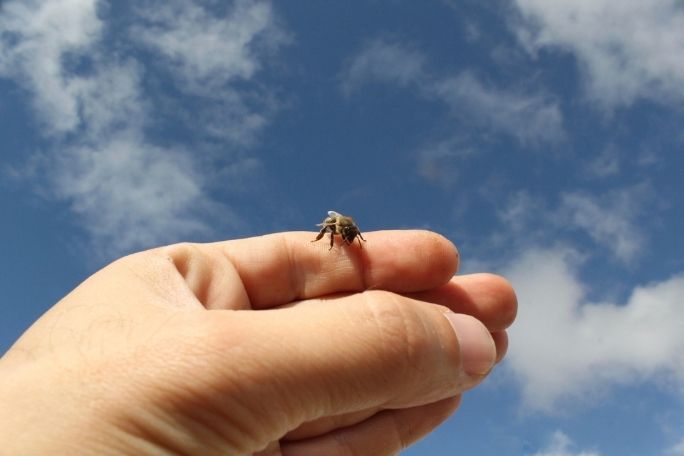Lesson summary
In this lesson students synthesise what they have learned from the Love Food? Love Bees! unit and develop a plan for taking action around themes presented in the unit. Students will work in groups to select a theme that is important to them, then brainstorm an idea for action. Next, they collaboratively plan their action project and execute this plan. Finally, students are asked to reflect upon the success of their project and their role in creating and executing the project.
Essential questions:
- What are the themes covered throughout the Love Food? Love Bees! unit?
- What are the different ways to take action around the issue of bees?
- How can we take action around this issue at our school or in our community?
- What are the processes and steps required for planning and executing a social action project?
Lesson guides and printables
Lesson details
Curriculum mapping
This lesson concludes the Love Food? Love Bees! unit. It provides students with the opportunity to apply their knowledge to create a social action project or awareness raising campaign around an issue they connected with through the unit. As a result this lesson can be integrated into a number of subject areas as the focus is on developing the General Capabilities of the Australian Curriculum and 21st century skills.
General capabilities: Literacy, Critical and Creative Thinking, Personal and Social Capability, Ethical Understanding, ICT Capability.
Cross-curriculum priority: Sustainability OI.1, OI.2, OI.5, OI.7, OI.8.
Unit of work: Love Food? Love Bees!
Time required: 60+ mins (this lesson could take between three and six sessions). Time should be determined by teacher prior to commencing the lesson so that students have a clear expectation of the deadline in which to execute their project.
Level of teacher scaffolding: High – oversee project planning and project execution.
Resources required
- Student Worksheet – one copy per student OR computers/tablets to access the online worksheet
- Project Planning Tool, Project Checklist
- Butcher’s paper and textas, online stopwatch
Skills
This lesson is designed to build students’ competencies in the following skills:
- Critical thinking
- Collaboration
- Creativity
- Communication
- Ethical understanding
- Social skills
- Initiative
- Digital literacy
- Community engagement
- Problem solving
- Global citizenship
Additional info
This lesson has been created in partnership with ACT for Bees. ACT for Bees is a not-for-profit organisation taking action to preserve these essential pollinators, ensuring a food-secure future.


Welcome back!
Don't have an account yet?
Log in with:
By signing up to Cool.org you consent and agree to Cool's privacy policy to
store, manage and process your personal information. To read more, please see
our privacy policy here(Opens in new tab).
Create your free Cool.org account.
Many of our resources are free, with an option to upgrade to Cool+ for premium content.
Already have an account?
Sign up with:
By signing up to Cool.org you consent and agree to Cool's privacy policy to
store, manage and process your personal information. To read more, please see
our privacy policy here(Opens in new tab).